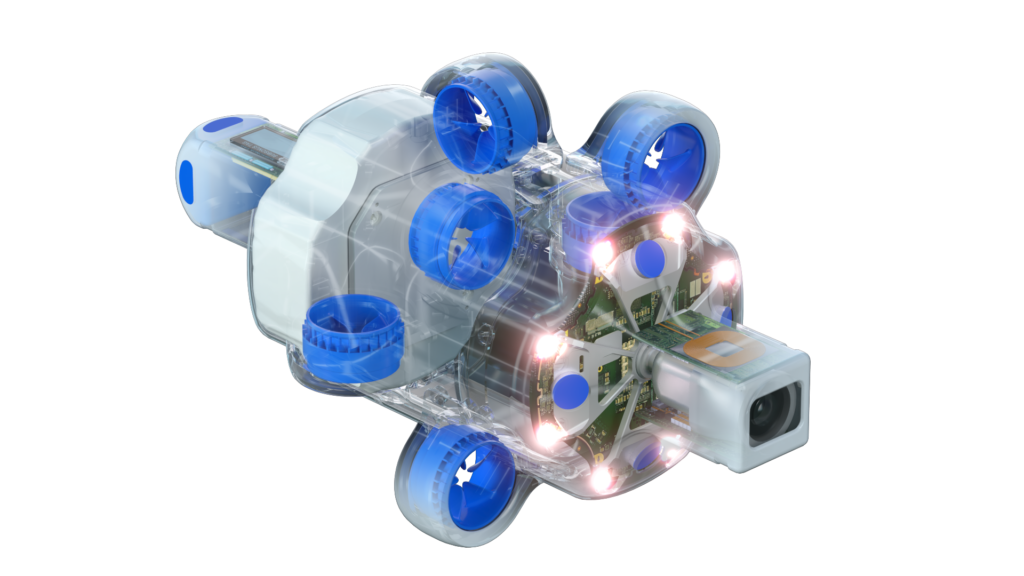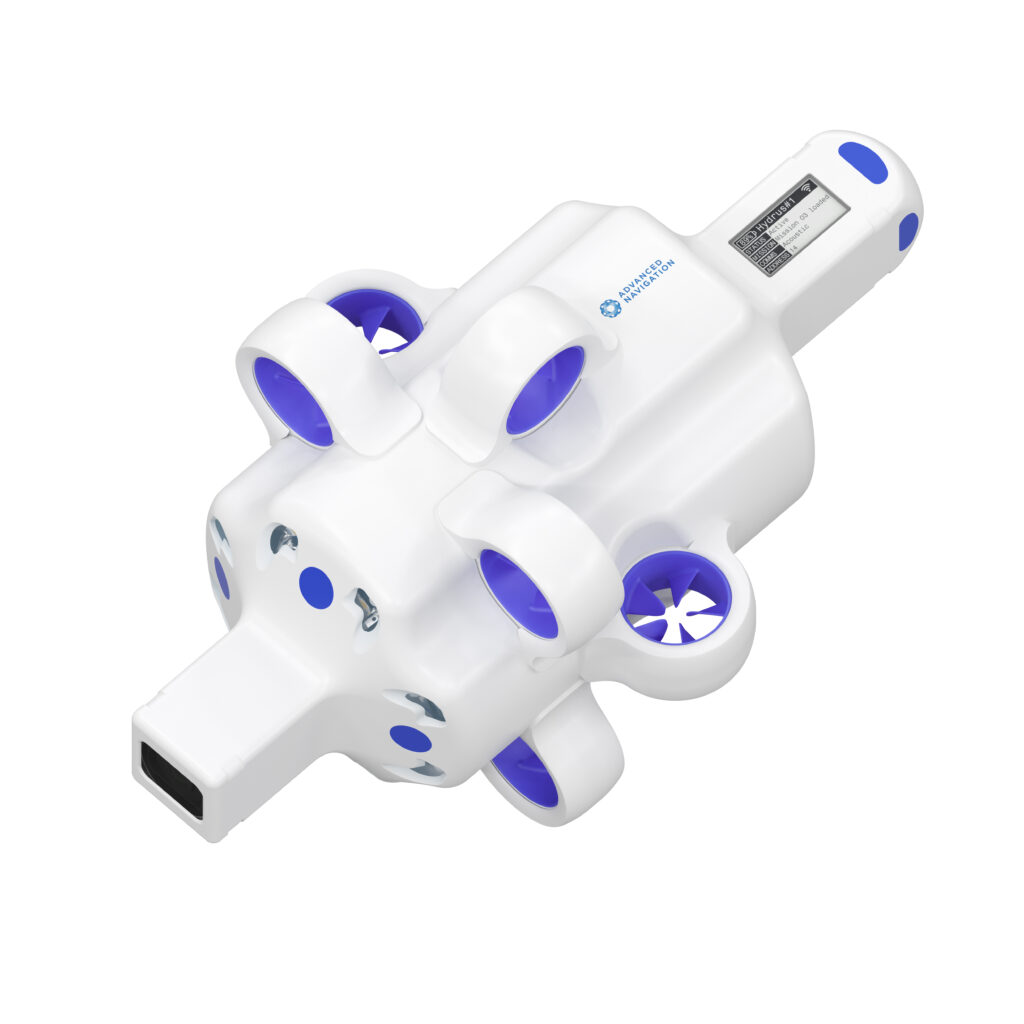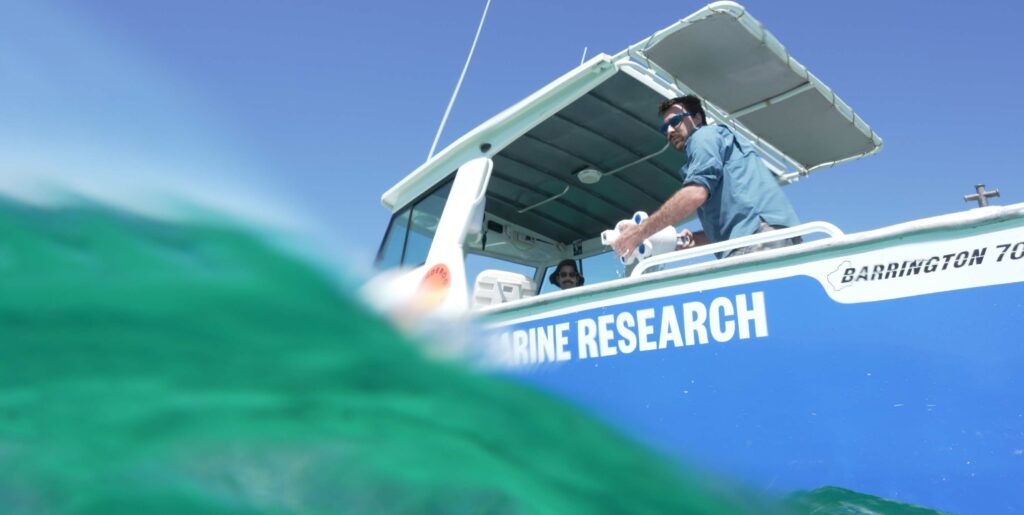The new Hydrus Autonomous Underwater Vehicle (AUV) from Oceanology International Americas (OiA) exhibitor Advanced Navigation fits in a standard airline carry-on bag but packs in industry leading technology.
This small platform punches well above its weight when it comes to commercial underwater inspection activities enthuses Advanced Navigation’s Subsea Product manager Peter Baker: “This is a commercial grade fully autonomous free swimming subsea robot, not to be confused with other similarly sized consumer or pro-sumer underwater drones which are usually tethered vehicles and remotely operated rather than fully autonomous.”
Hydrus is the fruit of over a decade of research and is described by Advanced Navigation as having ‘The most advanced sonar, navigation and communications systems of any AUV’. The company has developed most of the Hydrus sub systems entirely in house from its connectorless design and inductive charging to its AI enhanced INS (Inertial Navigation System) and DVL transducers. This in-house approach even extends to hardware, such as the rim drive, hubless thrusters which allow superfine control over the vehicle’s position and pose, but with significantly lower fouling propensity than traditional hub drive thrusters. According to Peter, “even difficult problems such as discarded fishing line or kelp usually pass straight through the thrusters and are simply passed out behind with no tangles. This is just one example of a system we developed in house because we wanted the best for Hydrus, and if the best wasn’t available we went ahead and built it.”

CUSTOM CODE
With an underwater transit speed of four knots and a surveying speed of two knots, Hydrus does not suffer from the speed constraints of other small AUVs making it a viable proposition for most tidal waters. It’s also an open software platform, allowing operators to load custom code, for instance uploading pre-existing AI rules so the system does not need to learn from scratch to identify underwater objects for a specific project, whether it is recognising a pipeline in free span or spotting and counting a specific species of starfish. Because the vehicle is foam filled with no internal air cavities it offers an impressive maximum depth of 3000m, and according to company CEO Xavier Orr, larger versions with longer and deeper range capabilities are already in development. Its out of the box video capability is 4K and 60FPS and it comes as standard with both forward and downward looking sonar.
The vehicle comes with a 100Wh battery, the maximum size allowed on an aircraft, and this allows a typical underwater mission time of 3-4 hours. One of the cleverest aspects though is the charging dock, which can be placed on the seabed allowing Hydrus to ‘swim’ itself into the dock whenever charging is required. Not only does this almost indefinitely extend mission time, the lack of connectors takes away any of the design headaches that competitor vehicles have around fouling on connectors and the ongoing watertight integrity of the vehicle. The aim is for Advanced Navigation to offer resident systems, whether this be on the seabed within an offshore windfarm or at a site of scientific importance, where charging docks can allow multiple vehicles to go about their work for weeks or months at a time with little or no human interference.

WORLDWIDE AWARENESS
For Advanced Navigation OiA represents the next stage of a worldwide awareness strategy, continues Peter: “OiA is a prime target for Hydrus. We brought the vehicle to OI in London in March where it received a very encouraging response, but we weren’t officially taking orders at that stage. Our presence at OiA is where we get to demonstrate it to the US West coast cluster of ocean professionals and take some firm orders. While we’ve exhibited it at a US East coast drone event, OiA is the first time we get to put this gamechanging technology in front of one of the largest concentrations of subsea professionals anywhere.”
The handy size of the vehicle lends itself well to a booth event like OiA as “we will be showing a live demo of Hydrus in a large display tank, highlighting the autonomous docking capability, wireless charging and data transfer that enables resident autonomy. The demo will continuingly be running throughout the conference,” Peter added.
The San Diego event is also set to provide a platform for some of Advanced Navigation’s other underwater problem-solving innovations including the Subsonus 1000m rated next-generation USBL/Modem and the Boreas ultra-high accuracy, world first, strategic-grade digital fibre optic gyroscope (DFOG).
Visit Advanced Navigation on booth A10 at Oceanology International Americas in San Diego, USA from 14th -16th February 2023



